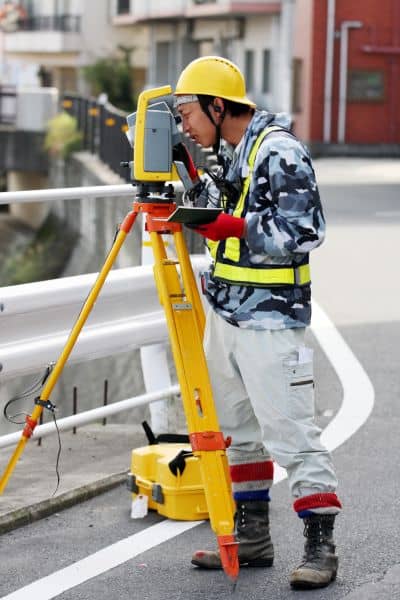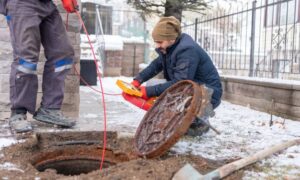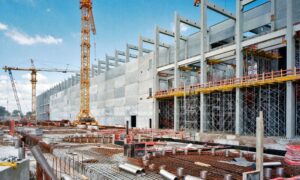
When Dallas residents heard that H-E-B planned to open its first store inside the city limits, excitement quickly mixed with concern. For many, the thought of new jobs and fresh groceries sounded great. But for neighbors near Hillcrest Road and LBJ Freeway, the project raised questions about traffic, safety, and the impact on daily life. That’s where a property survey quietly steps into the spotlight.
A property survey is more than a drawing of land lines. It is a legal map that shows boundaries, access points, easements, and features that affect how land can be used. In a rezoning battle, it becomes one of the most powerful tools a city and developer have to sort fact from fear. The H-E-B case shows how surveys shape decisions long before the first brick is laid.
What Neighbors Worry About vs. What Surveys Reveal
Neighbors are right to ask tough questions. Will traffic back up at rush hour? Will drivers cut through side streets? Will new parking lots create safety issues? These are real concerns. But emotions often run ahead of evidence.
This is where a property survey delivers clarity. By mapping exact right-of-way widths, driveway locations, and sight triangles at intersections, surveyors provide the facts. A survey shows whether the site can safely handle new entrances, where turn lanes might be needed, and how traffic can flow without endangering pedestrians.
For developers, this is not just paperwork. Without a survey, city planners won’t even consider rezoning. For neighbors, the survey gives answers to their biggest fears. In Dallas, that balance between growth and safety begins with survey data, not guesses.
The Platting Process Nobody Sees
Behind the scenes, a rezoning request in Dallas goes through a strict platting process. Most residents never see it, but every developer lives by it. The city requires plats that meet very specific rules:
- Sheets must be 24 by 36 inches.
- The scale must be 1 inch equals 40 feet.
- Text must be at least 10 characters per inch.
It sounds technical, but the goal is clear records that can be reviewed and stored for decades. On top of formatting, the survey must include bearings, distances, and ties to existing monuments. If any part is missing, the city can send the application back, delaying the entire project.
For H-E-B, and any other commercial developer, these steps are non-negotiable. The property survey is the foundation that supports every replat, every legal description, and every City Plan Commission hearing.
When Rezoning Redraws the Map

Rezoning often does more than change land use. It can redraw property lines, alleys, and rights-of-way. In the case of H-E-B, traffic concerns may push for tweaks to nearby access points. That means surveyors must prepare new field notes, update boundary lines, and sometimes prepare sketches for alley abandonments.
These changes are not small details. They affect who owns which piece of land, how traffic flows, and even how property taxes are assessed. Property surveys ensure that those changes are documented with precision so that disputes do not surface later.
For homeowners watching the H-E-B case unfold, this is a reminder: whenever land use shifts, surveys are what keep boundaries clear and legally defensible.
How State Highway Work Ties In
Adding another layer of complexity, the H-E-B site sits right next to I-635. TxDOT has ongoing “Keep It Moving Dallas” projects that affect turn lanes, ramps, and frontage roads. That means the property survey must line up not only with city rules but also with state highway designs.
If a new store driveway feeds into a state-controlled road, surveyors have to show that it meets spacing, alignment, and sight distance requirements. This coordination helps avoid accidents and keeps the project from getting caught between city and state jurisdictions.
For developers, failing to integrate highway data into the survey could stall approvals. For the public, it’s reassurance that growth won’t compromise road safety.
Why This Case Matters for Future Dallas Development
The H-E-B story is not just about groceries. It highlights how every rezoning battle in Dallas hinges on surveys. Whether it’s a commercial expansion, a subdivision, or even a small retail remodel, a property survey is often the first and most important step.
Think about what would happen without one. Neighbors would argue without evidence. City staff would review incomplete applications. Developers would face delay after delay. Instead, the survey creates a shared map everyone can work from.
For future projects across Dallas, the lesson is simple: don’t wait. Order a property survey early. It helps predict challenges, builds trust with the community, and keeps city approvals on track.
The Takeaway for Property Owners and Developers
For property owners, especially those considering rezoning or redevelopment, the H-E-B case offers a clear lesson. A property survey is not just for closing a sale or marking a fence line. It is the backbone of smart growth in Dallas.
If you’re planning to build, expand, or rezone, the survey is your best ally. It protects your investment, answers community questions, and clears the path through city and state regulations. And in a market as competitive as Dallas, that edge can make the difference between a project that moves forward and one that gets stuck in endless hearings.
Final Word
Rezoning battles can feel messy and emotional. But underneath the headlines and heated debates, a property survey keeps everything grounded. In Dallas, the H-E-B case is proving that surveys are more than technical documents — they are the blueprint for balancing growth, safety, and community trust.
Before the first cart rolls down an aisle, surveyors have already shaped the future of the site. And for anyone planning the next big project, that’s a powerful reminder: start with the survey, and everything else can follow.





